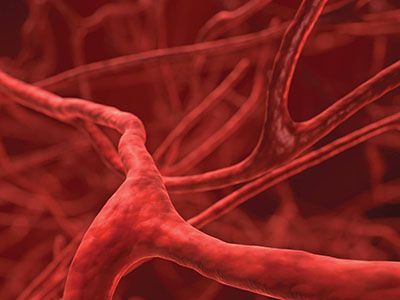Dr. Su's Blog
Optimizing Cardiovascular Risk Assessment: Looking Beyond the Standard Lipid Panel
More than one-third of all deaths in the United States are due to complications of cardiovascular disease such as clots, arrhythmias, cardiomyopathy, myocardial infarction, and congestive heart failure.
Amazingly, this is up from one-quarter in 2008. So, it appears that despite the prevalence of cholesterol testing and the requisite prescribing of statin medications, as a country we are not optimally assessing who is at greatest risk, nor how to best treat them. In fact, a 2009 study (1) found that half of all patients admitted to participating hospitals with cardiovascular complaints between 2000-2006 had LDL levels in the normal range (below 100mmol/L). In this blog I will focus on expanded testing beyond the standard lipid panel that can help us distinguish those who would benefit from deeper cardiovascular support versus those who have less cardiovascular risk.
Low-density lipoprotein (LDL) is the oft-demonized value on the lipid panel known as “bad cholesterol”. Actually, LDL is not the cholesterol itself, but the carrier protein carrying cholesterol from the digestion out to the extremities where it docks on specialized LDL receptors. It is considered “bad” because it is carrying cholesterol out into the circulation where it can become adhered to arteries as plaque. However, LDL particles come in different sizes, which affect how plaque-promoting they are.
Contrary to what you might think, larger LDL are less atherogenic than smaller LDL. The smaller LDL particles are caused both by genetics and lifestyle factors. They are correlated with high triglycerides and are higher in people with elevated blood sugars. Their greater risk profile stems from a lower affinity for the receptors so they cannot dock appropriately, which leads to slower clearance from the blood. Longer time in the circulatory system facilitates entry into the arterial wall, starting the process of plaque formation and also greater susceptibility to oxidation.

Lastly, if someone has smaller LDLs it means that it takes more of them to read as an elevated cholesterol, and more particles equates to greater cardiovascular risk. LDL particle number is the number of actual LDL molecules you have (whereas the LDL cholesterol number is how much cholesterol they are carrying). A helpful analogy is to think of the LDL-cholesterol as people being carried around the circulatory system on LDL buses. In this setting, it is not the amount of people who are being carried but how many buses there are that causes a traffic jam.
Particle number is therefore a better indicator of cardiovascular risk than particle size. Optimal range is <1000. In studies, they have found that in people with a low LDL, size or particle number does not matter. When particle number is not taken into account, it looks like size matters; once it is adjusted to include particle number, size does not matter, only number. Low LDL particle number is a stronger predictor of low risk than low LDL-C. 30-40% of people with low LDL-C actually have an elevated LDL-P, which denotes increased CVD risk.
Lipoprotein (a) is another lipid factor that can be looked at to achieve the fullest picture of cardiovascular risk. It is highly inheritable and not that responsive to diet, exercise, or statin medications. It can be a direct cause of plaque formation and plaque rupture. It magnifies the risk of LDL size and number.
Inflammation is closely tied to cardiovascular disease. An adult has approximately 100,000 miles of blood vessels, so inflammation is very significant. I like to check high-sensitivity-C-reactive Protein (CRP) to assess vasculature inflammation. High levels predict future cardiovascular events better than elevated LDL cholesterol. Vessel inflammation primarily impacts the endothelium, which is the lining of the heart, blood vessels, and lymphatic channels. Its functions include a) mediation of the inflammatory process, b) maintaining healthy clotting and immune function, and c) maintaining appropriate fluid balance. Optimally, I like to see an hs-CRP below 1.00 for lowest risk, and below 3.00 for average risk.

Another value I like to see while assessing cardiovascular wellness is the homocysteine level. Homocysteine is an amino acid made in the body from methionine. At elevated levels it inhibits healthy formation of arterial collagen, elastin, and proteoglycans (connective tissue), resulting in damage and stiffening of the arteries. It also oxidizes LDL, which contributes to plaque build-up in the arteries. People who have mutated MTHFR genes have difficulty utilizing folate to assist with methylating homocysteine back into methionine, so homocysteine levels can become elevated. This process can be supported by taking 1-5mg of a methylated folate and B12.
Lastly, I like to know if someone is in a hyper-coaguable state, meaning excessively prone to blood clotting. Looking at the CBC (Complete Blood Count), I always look at the platelets to make sure they are not too high. I also like to see a fibrinogen level. In our bloodstreams, fibrinogen becomes fibrin, which is an insoluble mesh essential for making blood clots. In the presence of inflammation, excessive fibrin is formed which creates “sticky blood”. This leads to fibrosis, blood stagnation, and poor circulation with lowered oxygenation. Aside from in cardiovascular disease, elevated levels are commonly seen in cancer patients, and there is also an association between elevated fibrinogen and Alzheimer’s disease.
As you can see, a broader test panel will give a more comprehensive picture of cardiovascular risk. The above list does not include other factors which deeply impact heart health, such as insulin resistance, anabolic hormonal status, the thyroid, and, of course, stress and cortisol. Only by addressing the cardiovascular system in the context of the whole health of a person can we achieve optimal health.
Stay tuned for the next blog on some of my favorite tools to support cardiovascular wellness. Until then, don’t forget, laughter is great medicine for the heart!
1. Am Heart J. 2009 Jan;157(1):111-117.e2. doi: 10.1016/j.ahj.2008.08.010. Epub 2008 Oct 22.

Meet Dr. Su!
Dr. Susan Saccomanno, ND, LAc is a contributing writer to the Mederi Blog and a practitioner at the Mederi Center Clinic in Ashland, Oregon. She has over a decade of experience as a family physician with a specialty in holistic cancer care and chronic illness. Dr. Su has been practicing at the Mederi Center since 2014, where she blends the best of naturopathic and Chinese traditions.
Dr. Su became a doctor out of her passion for helping people achieve vibrant health. She received her Naturopathic Doctorate and Master of Oriental Medicine degrees from National College of Natural Medicine, and extended her studies in integrative cancer care in the Eclectic Triphasic Medical System (ETMS), founded and taught by Donnie Yance.


